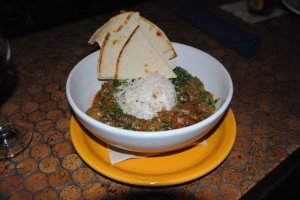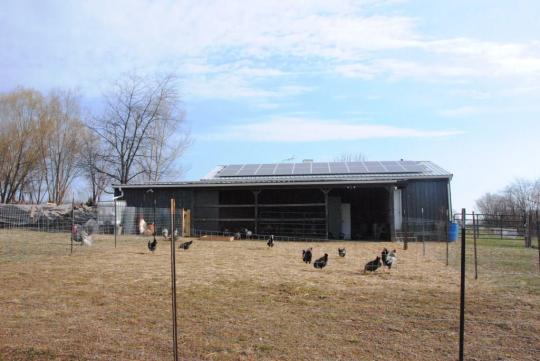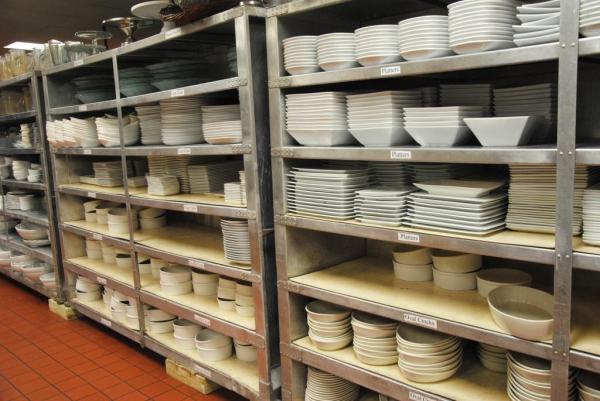Food Preferences
I worked for a doctor who was born and raised in China. One day he shared an interesting story: his father had traveled to a distant city on business and went to eat dinner at a nice restaurant that night. He had long heard that there was a famous local dish and believed this was the opportunity to taste it. He was horrified, however, when the covered platter was presented and inside were 4 live baby mice. He happily traded the dish with the man at the next table for his bowl of noodles.
 The reason behind this tale is to illustrate that in different places and different times, people have enjoyed foods that we consider strange. Andrew Zimmern shows that each week on his tv show Bizarre Foods. When he visited West Virginia to see the Road Kill Cook-Off we had no issues with the food here, but the concept amuses and even horrifies people only 500 miles away.
The reason behind this tale is to illustrate that in different places and different times, people have enjoyed foods that we consider strange. Andrew Zimmern shows that each week on his tv show Bizarre Foods. When he visited West Virginia to see the Road Kill Cook-Off we had no issues with the food here, but the concept amuses and even horrifies people only 500 miles away.
Throughout time the food people ate depended greatly on the climate and what foods could be cultivated or found naturally in the wild. Today we have a vast selection of food available to us that travel hundreds and thousands of miles to our local supermarkets.
Our food preferences are greatly influenced by our parents and how they introduce new tastes to us as a baby. In addition there are other factors that cause us to make food choices: our peers, our susceptibility to persuasion by advertising, income, and apparently also our political leanings.
A study done in 2009 showed that liberals tend to be willing to try new foods and will eat more international diets while conservatives tend to eat the traditional meat and potato diet.
Suggesting to adults that modifying their diet to something that has been demonstrated will be healthier is difficult at best. Breaking a habit of any type takes will power and determination. My oldest sister has recently been told that her BMI is too low. Her need to gain weight means a change in a long established eating habit and is as difficult for her as losing weight is to me. 
But even Andrew Zimmern has changed his emphasis from bizarre to best. Identifying the best foods available in markets and restaurants in the United States is the message in his Appetite for Life program. “By making just these small changes, we will ease the pressure off of those commodity farms, and by voting with our wallets and our mouths we send a large message to all of Big Ag and Big Food. These are small steps we can take to make a big difference. We have the power to change the way we eat in America, one plate at a time.”
So, make the switch, lay off the fast food deep fried daily habit and switch to finding and preparing good local foods at least 3 or 4 times a week. Now that the farmers’ markets are open, go explore new foods and new ways to prepare them. WVFarm2u has an interactive page on the website that will help you locate local food at farmers’ markets, farmstands, on the farm sales and more! Go to http://www.wvfarm2u.org/ to start your own effort to improve your access to local food and support the local economy.
Bluegrass in Charleston
The West Virginia State Track meet last weekend ended early enough (many meets run to 10pm) that we could enjoy a marvelous dinner at Bluegrass Kitchen, located in Charleston’s East End at 1600 Washington Street East. Near the Capitol and also near Laidley Field, Bluegrass Kitchen offers a menu with many seasonal locally sourced dishes that are well prepared.
Owner Keely Steele works with small local farms and organic suppliers to source pesticide, hormone & antibiotic-free and non-genetically-modified food supplies. The farms providing protein and produce are located in West Virginia, Kentucky and Ohio within a couple of hours from Charleston. Farms like Fish Hawk Acres provide produce year round and the menu offers specials that reflect seasonal offerings.
We ordered the fried chicken and the green curried lamb. Both were delicious! This is a restaurant we would patronize often if we lived closer!
Keeley Steele owns three eateries, each appealing, and each worth a visit. Tricky Fish, located across the street from Bluegrass Kitchen, is more laid back with a deck for outside eating and drinking. Frütcake is the pastry shop and desserts at both restaurants are from that bakery.
The Bluegrass Kitchen operates with a mission of sustainability with an effort to recycle, eliminate or reduce the use of plastic, conserve electricity where possible, and eliminate the use of chemicals. Their mission is to measurably reduce our carbon footprint on the environment and to provide high quality food and beverage service with a sustainable, recyclable and local emphasis on all products used in the course of our business. It is our goal to fully establish these practices throughout our restaurants and continually learn about the newest developments in all areas of sustainability and implement changes as an ongoing practice of our businesses. We strive to help redevelop Charleston’s Historic East End as an arts & small-business-friendly district and are active participants in East End Main Street.
Ruby Dean Collins’s love for the West Virginian mountains is instilled in her soul. Her roots are deep and she’s proud of her “country style” cooking. In fact, her deep admiration for heritage cooking enabled her to write Grandma’s Favorites, a compilation of her Grandmother Murphy’s recipes. She has won cooking competitions including first the local, and then the statewide, Country Roads Cook-Offs®.

Along with her good friend Melody Urbanic of Café Cimino, Ruby helped lead the efforts to organize other community partners in establishing the Collaborative for the 21st Century Appalachia’s® Country Roads Cook-Off as part of Braxton County’s Mountain Lakes Festival four years ago. Out of those extensive community planning efforts grew not only the event itself, but the concept of compiling a cookbook of regional recipes. Here again Ruby took the lead in writing, gathering, editing, and publishing. Contributions of recipes and stories by members of CEOS (Community Extension Outreach Service) and many of her friends and neighbors were included in The Mountain Family Treasures, a collection of a community’s family favorites was published, again with support from the Collaborative for the 21st Century Appalachia, because of her leadership.
Following recuperation from a serious illness, Ruby’s recognized how invigorating the work with the Cook-Off and the cookbook had been for her. She really did want to share this love of Appalachian cooking with others. Starting small and offering her goods only to friends, she slowly and steadily built a new business, the Baker’s Kitchen. With friends calling and sending requests via Facebook, she started making periodic deliveries to them.
As the word spread, and people she had not known before started requesting baked goods as well as lunch items, she realized she had to get serious. It took some time but she renovated her back porch into a commercial kitchen and has passed all state and local licensing requirements. It’s official: The Baker’s Kitchen was born as a West Virginia start up business!
Tim and Melody Urbanic offered support and encouragement throughout her business growth and development. Café Cimino is a regular customer, purchasing muffins and jams to serve with their breakfasts at the B&B.
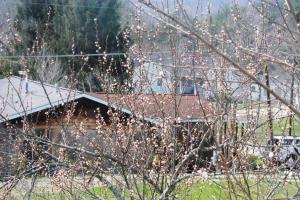 Ruby searches out local ingredients ( when in season) for her food. Much is from local farms but some is homegrown with peaches growing outside the bakery kitchen windows and rhubarb in the garden for the fresh jams and cobblers and adds her fresh green onions for the marinara sauce she not only uses for her calzones but also cans for off-season use. FRESH from the farm goodness is a hallmark of The Baker’s Kitchen products. The jams are becoming a highlight for many breakfast tables. Her specialties include Strawberry, Blackberry, and Peach.
Ruby searches out local ingredients ( when in season) for her food. Much is from local farms but some is homegrown with peaches growing outside the bakery kitchen windows and rhubarb in the garden for the fresh jams and cobblers and adds her fresh green onions for the marinara sauce she not only uses for her calzones but also cans for off-season use. FRESH from the farm goodness is a hallmark of The Baker’s Kitchen products. The jams are becoming a highlight for many breakfast tables. Her specialties include Strawberry, Blackberry, and Peach.
The Baker’s Kitchen is the only full service bakery in the region, and takes pride in providing fresh, quality products to the area. She states that the decision to locate the bakery at her home was totally based on the need to be close to her grandson whom she is helping to raise. Family is paramount to Ruby and she works hard to fit it all in, often up at the crack of dawn to be able to deliver warm donuts mid-morning to her regular customers. She recently taught a Bread Baking course at New River Community and Technical College in Summersville. The Sutton Lake Marina will be offering a local favorite of the Baker’s Kitchen, Pepperoni Rolls, to their customers. She states that she is honored to serve them and looks forward to it very much. She has begun to receive orders from people outside the area. Ruby will ship anywhere in the eastern United States, saying “If it fits, it ships!” She also offers party trays for special events or can make something for those who may want good “home country cooking”.
To place an order you can find Ruby and pictures of her products on Facebook at www.facebook.com/The Baker’s Kitchen or phone 304-765-3240.
Lemons Grow in West Virginia!
A member of the Panorama at the Peak Cast Iron Cook-Off team, Rob Losey contributed not only his Bloomery Plantation Distillery Limoncello for pairing with the dessert course, but offered two of the first ten lemons ever grown successfully in West Virginia. It was so unusual, the judges at the cooking competition were surprised.
Rob’s ex-wife Linda and her partner Tom Kiefer started the distillery after a trip to Italy awakened their appreciation of limoncello. That spark lead them to attempt to replicate, and then surpass the taste experience they had had.
 Selecting Santa Theresa lemons because they can grow in the cooler climate of northern Italy, they planted rootstock in their greenhouse and waited. West Virginia state law requires distilleries to use a minimum of 25% of local ingredients. The lemons will be used for producing their amazing limoncello and the fantastic Cremma Lemma, Raspberry Lemoncello and the Lemon Ice. Rows of raspberry bushes planted on the hillside provide the fruit for not only the pairing with the lemons but also the Dark Chocolate Raspberry SweetShine.
Selecting Santa Theresa lemons because they can grow in the cooler climate of northern Italy, they planted rootstock in their greenhouse and waited. West Virginia state law requires distilleries to use a minimum of 25% of local ingredients. The lemons will be used for producing their amazing limoncello and the fantastic Cremma Lemma, Raspberry Lemoncello and the Lemon Ice. Rows of raspberry bushes planted on the hillside provide the fruit for not only the pairing with the lemons but also the Dark Chocolate Raspberry SweetShine.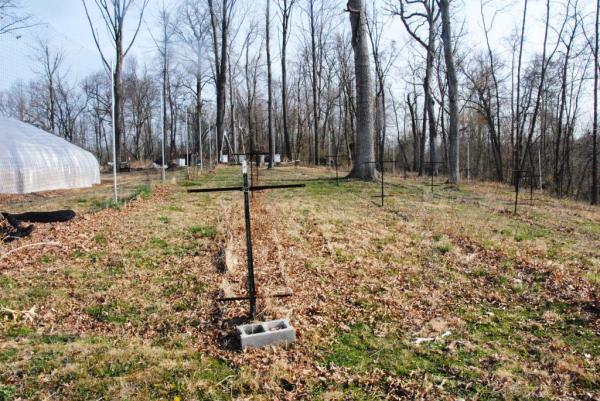
Although the lemons grew better than expected up through this winter, brushing the ceiling glass of the greenhouse, a malfunctioning gauge resulted in no heat on a frigid night, and it appeared that the trees had been lost. Trimmed back, almost all are responding well with new growth.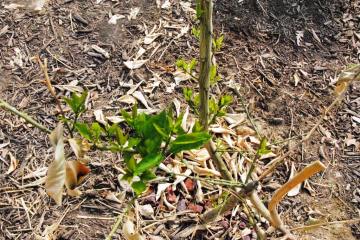
Set-backs like this are not new. As any farmer knows, the weather can play cruel tricks. Last year’s Derecho blew the fruit off the raspberry plants. The deer have also been testing the 10-foot fence that enclosed the vast hillside patch.
Located on 12 acres on the former Willowbrook plantation site just outside of Charles Town. The historic bloomery was actually the earliest iron works west of the Blue Ridge Mountains. The distillery tasting room, upper activity room and the distillery’s working kitchen occupies the former slave quarters of the plantation, with additions from 1880 constructed from the wood of the boats that plied the nearby Shenandoah River, carrying good and people in daytime and rumored to carrying moonshine at night. 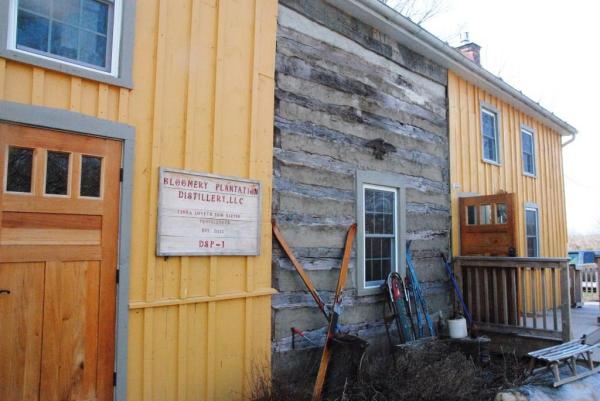
The products of Bloomery Plantation Distillery have been winning numerous awards. Professional reviews are also positive. Last summer, in two separate international competitions, Bloomery Plantation Distillery’s products earned eight gold, silver and platinum awards.You can visit the tasting room on weekends and enjoy music most Fridays and Saturdays. Rob has been in charge of marketing and placing the products and they can be found throughout the state.
Mountain Diamond Ranch
Born in the 1950s, it seems that many of the tv shows when I was young were about the West and cowboys. Rawhide is a good example; the weekly story generally revolved around a trail ride, herding cattle to market. It didn’t hurt that the young herder, Rowdy Yates, was Clint Eastwood, but I will disappoint you if you think this is about him. It’s not. It’s about the cattle.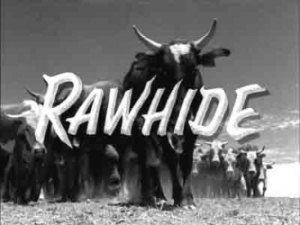
The southern Plains were settled in the 1830s and as the demand for beef grew along the eastern seaboard, ranchers started to drive their cattle to market. Early trails lead to New Orleans where the animals would be shipped but when the railroads started crossing the country, trail drives lead north. For example, the Chisholm Trail lead north from the vicinity of Fort Worth, Texas, across Indian Territory (Oklahoma) to the rail-head at Abilene, Kansas. It was about 520 miles long and avoided settlements where the local farmers were concerned about loss of forage for their own animals and Texas tick fever. 
The typical drive comprised 1,500–2,500 head of cattle. In addition to the trail boss (perhaps the owner or a hired drover), ten to fifteen hands were needed. Each cowboy had a string of five to ten horses which were tended by the horse wrangler. The cook drove the chuck wagon.which carried the bedrolls; tents were considered excess luxury. The men drove and grazed the cattle most of the day, herding them by relays at night. Ten or twelve miles was considered a good day’s drive, as the cattle had to thrive on the route. They ate grass; the men had bread, meat, beans with bacon, and coffee. Wages were about $40 a month, paid when the herd were sold.
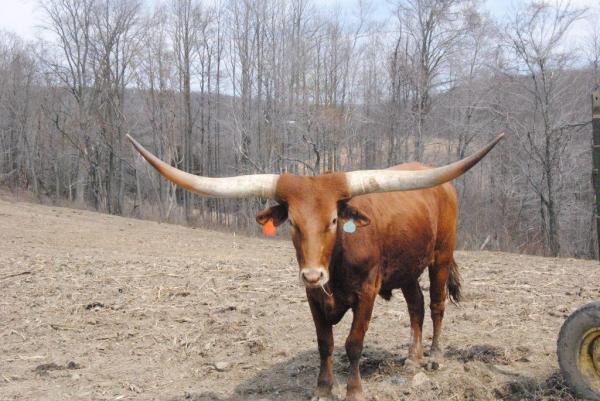
The predominant cattle breed on these drives was the Texas Longhorn. Adaptable to almost any climate, the Texas Longhorn has a variety of colors with few that look alike. Similar looking calves are called produce of dam or get of sire, depending on which animal they resemble. Horn length can be as short as four feet but some steers have horns that reach as much as nine feet. Curvature of the horn also varies.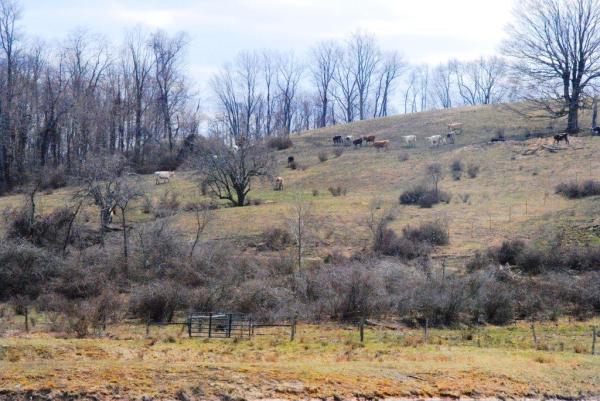
Barb and Dave Miller own the Mountain Diamond Longhorn Ranch on about 100 acres near Tunnelton in Preston County. Dave grew up on that land and met Barb at Fairmont State. In 1999 the house was built, the land was fenced and they started raising Longhorns. The decision to acquire Longhorns was pretty much coincidental with someone they knew having some that needed a new home. They very much enjoy the breed and I could tell, as Barb drove me around, that the cattle are very used to them. They currently have about 80 head of cattle, mostly Longhorns but also some Corriente and some Watusi. Two oxen have been trained to the yoke.
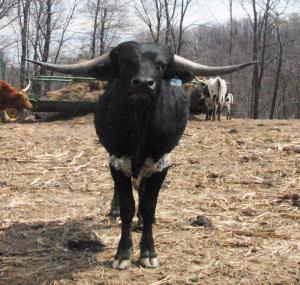 Grass fed with grain available, including corn that the Millers grow, the breed takes three to four years to grow full size. Some calves are sold for breeding stock; others are for ropers. The horned breeds are needed for rodeo action and the calves provide practice. Mountain Diamond beef is also sold at several farmer’s markets in the Morgantown area and at the State Fair. Barb believes the meat is sweeter than other, more commercially marketed beef, and very tender.
Grass fed with grain available, including corn that the Millers grow, the breed takes three to four years to grow full size. Some calves are sold for breeding stock; others are for ropers. The horned breeds are needed for rodeo action and the calves provide practice. Mountain Diamond beef is also sold at several farmer’s markets in the Morgantown area and at the State Fair. Barb believes the meat is sweeter than other, more commercially marketed beef, and very tender.
Several dug ponds hold flow from three sweet natural springs that run well, even in dry summers. A solar panel provides power to the pump to get water to the gardens. The Millers lost two high tunnels recently to the Derecho and also heavy winter snows. They are considering how to replace those garden areas. 
Sustainability In Hand
When Steve Martin decided he needed a weekend get-away from his job with the Department of Defense he was only beginning to think of that time, years from then, when he would retire. He found two 10-acre contiguous parcels of land near Romney and started his farm. Located near the hamlet of Three Churches, his could see one across the fields, hence the name, Church View Farm.
Although they often worked near each other, Steve met Ruth when they both were moved to another location while the Pentagon was being repaired. She was thrilled with the concept of an early retirement and so, they made their escape from the crowds and then really got to work.
As they developed their concept it became apparent that they placed a high value on sustainability. While they recognize that they are part of a larger farming community as well as active residents in West Virginia’s beautiful Potomac Highlands, they understand that they can produce much of their own food needs themselves.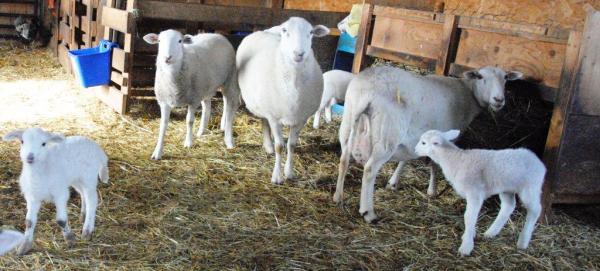
They raise Katahdin sheep and have had several lambs so far this spring and are expecting more. They sell some for breeding stock and others are processed for meat. 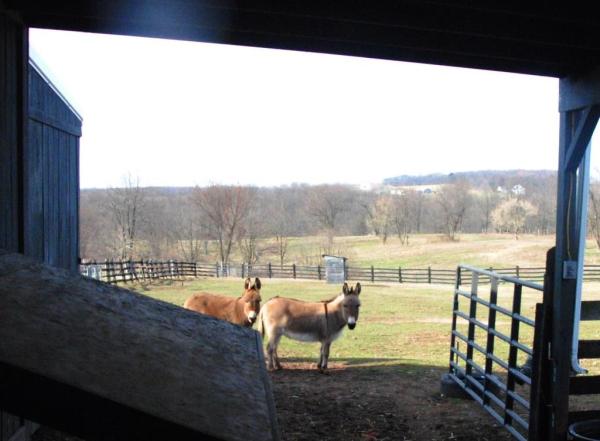 Two companion mules help provide protection and they have not had any problems with predators, even in this rural area.
Two companion mules help provide protection and they have not had any problems with predators, even in this rural area.
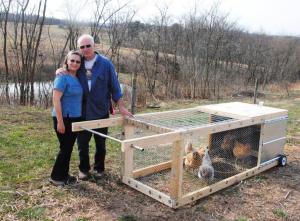 Turkeys and chickens are the other animals on the farm, providing additional meat and eggs. Several fenced areas are set aside for the chickens to free range. A small chicken tractor is used for a few more birds.
Turkeys and chickens are the other animals on the farm, providing additional meat and eggs. Several fenced areas are set aside for the chickens to free range. A small chicken tractor is used for a few more birds.
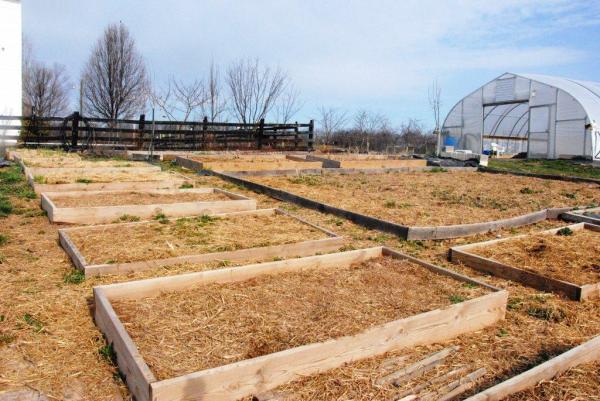
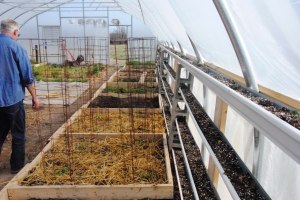 Raised beds provide extensive seasonal garden areas and the high tunnel extends the growing cycle. Ruth and Steve continued to harvest greens through this past winter and are seeing new growth in other crop areas. Always looking for ways to maximize space, Steve and Ruth are trying strawberries in gutters positioned inside the high tunnel.
Raised beds provide extensive seasonal garden areas and the high tunnel extends the growing cycle. Ruth and Steve continued to harvest greens through this past winter and are seeing new growth in other crop areas. Always looking for ways to maximize space, Steve and Ruth are trying strawberries in gutters positioned inside the high tunnel.
Herbs are raised in reused old tires, with an unexpected benefit of providing bumpers during lawn mowing.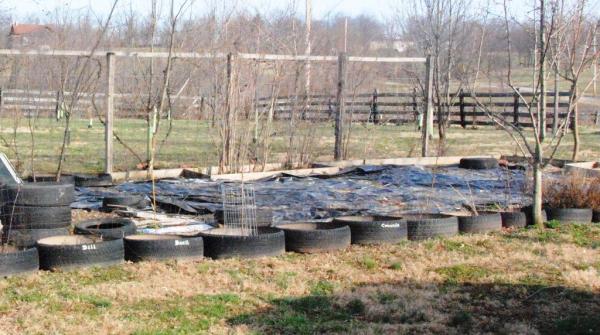

Three varieties of table grapes, raspberries and blackberries and numerous fruit trees are planted near the house as well. Tree trunks have been wrapped to discourage the deer. Four beehives not only provide excellent cross pollination of plants but honey for them to enjoy.
Steve has installed solar panels on the roofs of two buildings, providing the majority of their electric needs. He hopes West Virginia follows the example of Virginia, which recently passed a law permitting private owners of solar fields to sell excess power to the electric utility company, thereby reducing the public need for other fuels.
~~~~~~~~~~~~~~~~~~~~~~~~~~~~~~~~~~~~~~~~~~~~~~~~~~~~~~~~~~~~~~~~~~~~~~~~~~~~~~~~~~~~~~~~~~~~~~~~~~~~~~~~~~~~~~~~~~~~~~~~~~~~~~~~~~~~~~~~~~~~~~~~~~~~~~~~~~~~~~~~~~~~~~~~~~~~~~~~~~~~~~~~~Ruth’s skills extend into the kitchen where she cans the farm’s produce and also makes soap to sell at market. The Martins are interested in Romney’s plans for the new co-op developing into a year-round indoor market.


Church View Farm
Steven and Ruth Martin
Romney, WV
(304) 822-3878
Time for a Break
One thing that has become very apparent to me is that the farmers I have met never take a vacation. For most, the prime issue is not even the question of financing the play time. For most it is the fact that there are animals to tend to. They need feeding and, if dairy, milking. There is no getting away from these duties.Every day. 24/7/365.
Until now.
Enter Hollie Craddick, a Farmer without a Farm. She is offering farm sitting services. She is also available to help with large jobs that need more hands, like hoof trimming, putting up a fence or drawing blood. 
Hollie grew up in Wayne County and although she lived in a subdivision, she always believed she was a country girl. The family took vacations to the beach and other places but her best memories are the times spent on her grandparents’ farm near Pax. There in the rugged hillside they had a flat place for the house and for the pond, but they managed to have a working farm with turkeys, chickens, ducks, pigs and dairy goats as well as a garden. Hollie is proud that she first successfully milked a goat at age 7.
She did finally own a farm. Her husband and she acquired some land and soon she had some animals. It was too cold for her first flock of chicks outside so they started life in the living room. She purchased two miniNubians and it turned out one was pregnant—with triplets. Her herd grew with the introduction of a buck and she also added some llamas as guard animals. She loved it, homeschooling her toddlers and enjoying her farm chores. Things were fine on the land but not so good otherwise, and her marriage dissolved and so did her dream of farm ownership.
She went back to school and is currently pursuing her masters in teaching English as a second language. Working with some of Marshall’s foreign students, she took one to visit Stephanie Pauley’s Rowdy Acres and introduced one Chinese woman from Beijing to another side of American life. Hollie says so many of the foreign students think of America as McDonalds and malls and getting them out to the farms is one way to help them to connect to nature as well as the reality of where food is produced.
And then one of her friends told her that another friend had the opportunity to take a trip of her dreams, a cruise that she had always wanted to enjoy. Only problem was who would take care of the goats, pigs, ducks and chickens. No problem! Hollie to the rescue!
More people have begun to make inquiries as the concept of a vacation relief has become a possibility here in the tri-state area. Also to be considered are shorter trips out of town when someone has a family emergency.
Each Farm Sitting would require individual arrangements depending on the number of animals involved and other duties as well as distance and if it is during the school year or vacation time for her son and daughter. To contact Hollie call 304-710-8414 and check out her Facebook Page, Farmless Farmer, at https://www.facebook.com/pages/Farmless-Farmer/125819144268920?fref=ts.
Wild Ramps
It is that time of year again. The native wild plant, the ramp, is beginning to show itself in the wooded mountainsides of the Appalachian region. 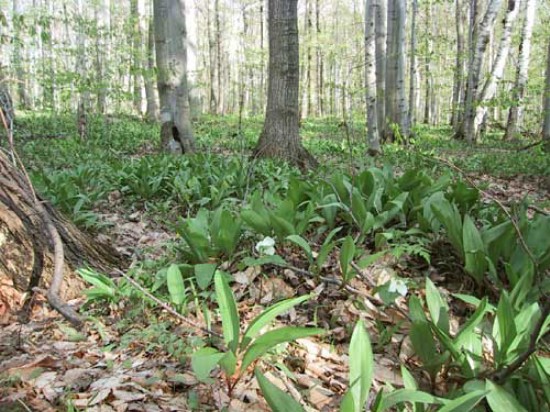
Growing up in the New York metropolitan area, I was unaware of wild ramps until I moved to Tennessee. There, each year there is a ramp festival in Cosby, east of Knoxville. I never went so it wasn’t until last year, with the warmer spring weather, my CSA box rom Fish Hawk Acres was full of ramps week after week. It was a wonderful introduction to this wild leek.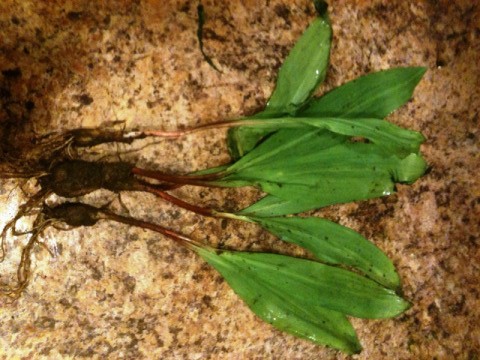
Last year, as the local market was formed in Huntington, a naming contest was held on Facebook and The Wild Ramp won by popular vote. It has helped teach consumers about how a local market works: produce is available only when in season. At least once a week a newbie to the market asks if we have any ramps. One of our farmers, Aimee Figgatt of Tyler Creek Farm, dried some ramps last year and gave me a small baggie as a Christmas gift. Part of that was used at the Cast Iron Cook-Off but we will be able to enjoy a sprinkle of ramps out of season now.
I have a friend who shared a childhood story with me. Growing up in coal country, he attended a one-room school house. He said by the time ramps appeared in the woods people were eager for greens and the odors in the school room grew until children started to get kicked out for several days to let the oils subside. He said several kids who didn’t particularly care for school stretched out their ramp eating as long as possible to avoid class.
The colder spring temperatures this year mean the ramps are appearing later. The Richwood Ramp Festival is scheduled for April 20 and many fire halls and churches hold ramp supper fund raisers this time of year throughout Appalachia, even north into Quebec!


